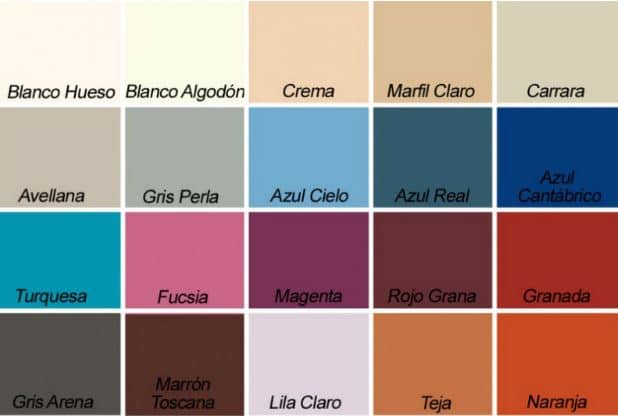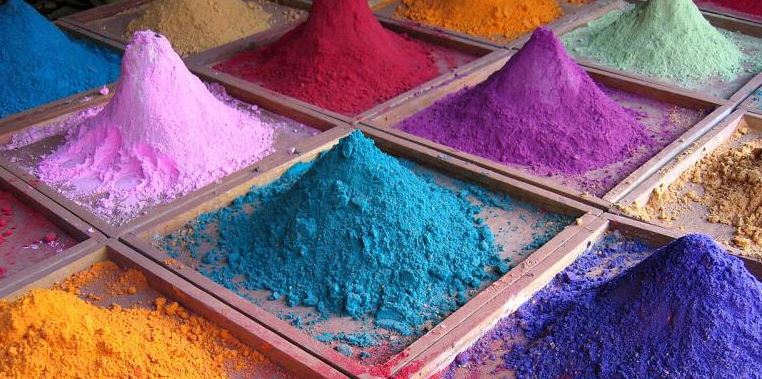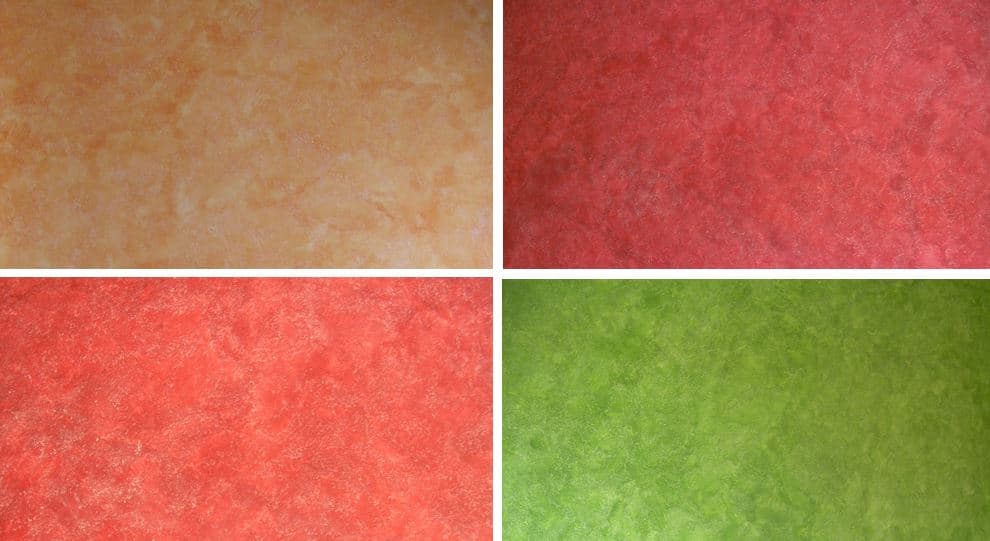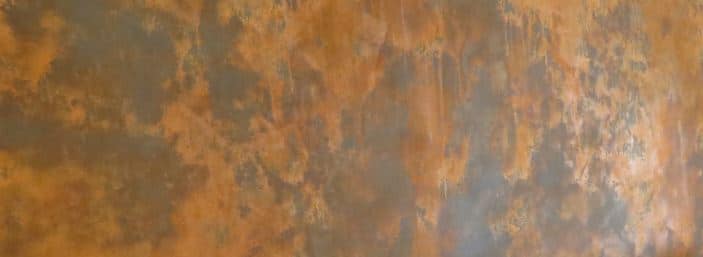-
Phone Number
-
Email Address
Throughout history painting decorative has been used for centuries to beautify objects and interiors of buildings, as well as for imitate materials whose cost was very high. In the Currently, the discovery of new synthetic paints allow the decoration of all types of surfaces, so the application has no limits and everything depends on creativity of each person.
So we are going to try to break down the effects of the painting on walls for decoration; from their characteristics, types, application processes and the different techniques that are currently practiced in the decoration of walls and that we can buy in the market.
Remember that we already made an article on how to paint walls with various tips and tricks to achieve a finished perfect for painting with effects . Now It's time to see some examples of decorative paintings !
Content menu:
To decorate walls , there are different types of paint and each of them is indicated for a particular use. Here we will discuss the most common used in the home to obtain finishes suitable decorative , since in the industry there are infinite varieties of painting, each one adapted to a production process in particular.
It is the most common used indoors to paint the wall , depending on its composition, can be also used outdoors.
Most plastic or latex paints are washable once dry applied, as its solvent is the water, it has to dry well to be able to appreciate these properties.
Generally plastic paints can be: acrylic or vinyl and are called emulsion paints . Ideal for all types of walls and ceilings (plaster, plasterboard, plaster, cement, stone, temple,…).
Let's see the advantages of plastic paint and its types in an infographic:
They are very strong paints, composed of synthetic resins solvent-based and can have a matt, satin and bright. They are highly decorative and protective, generally used to paint wood and metals. Although They can be applied to most supports.
As its name indicates, its base is acrylic resins, as well as catalysts and pigments. They are soluble in water and not They have an odor, so they are indicated to be used in poorly ventilated places.

They adhere to most supports such as enamels synthetic, with the advantage that they do not smell, they dissolve with water and are more ecological. They are widely used for decoration. artistic.
The most common varnishes are polyurethane, and are differentiated by the solvent used: Water, thinner or white spirit, oil.
It has waterproof, abrasion-resistant, and last several years. They can be found already mixed with dyes wood color (oak, cedar, mahogany,…) or transparent.
It is used to protect and decorate wood, but also It is used in crafts, since in its colorless format allows you to protect any painting (paintings, handicrafts, …)
They are based on liquid potassium silicate, minerals of natural origin and inorganic coloring pigments, the quality The most important thing about these paints is that they adhere to the support through an insoluble chemical reaction called silicification or petrification, and does not form a film shallow.

It is highly breathable or permeability to water vapor, ideal for use on walls with moisture problems to practice decorative effects in the walls .
It should be remembered that in the article on applications of augmented reality for decoration we saw some apps interesting and that can help us a lot with good ideas and simplify some jobs like measuring the walls.
Venetian stucco is prepared with lime, marble dust and pigments. Lime has elastic properties, which prevents contraction and expansion cracks. It is also waterproof and fungicide.
In the production of the stucco, pigments and synthetic compounds , in addition to the marble sand that Provides shine and hardness. The walls to be stuccoed must be perfectly smooth and free from dirt, mildew, dust or fat.

Stucco offers a wide field of application in the interior design and its useful life is very long, if you use a stucco of quality and it does not receive direct sunlight, maintains its shine and color for more than 10 years or more.
First of all we have to prepare the walls to the millimetre, since the stucco is translucent and has an effect memory, therefore everything the spatula does on the wall will be registered. And, when it comes to polishing, it will be seen every layer, mounted one on another.
Therefore, we will follow the following steps to apply Venetian stucco in the following video:
With a very small amount of stucco on the spatula we applying on the wall in all possible directions, left, right, up, down and diagonal. Even if you don't see it at the moment, When we shine the stucco, each one of them becomes visible. spatulas-os. So keep the same pattern.
The more layers it is, the better it stays. And as the last layer It is the one that is seen the most, you have already caught the trick of the game of dolls, it should fit well. With practice you will be able to different drawings in the stucco, highlighting the peculiarities of this nice stuff.

The shades and colors of a finished stucco Venetian can vary a lot, so it's best to show a catalog to get an idea:
Remember to see the color of the year according to ElPaís.
Obviously the prices of a stucco Venetian vary mainly according to their quality. If we decide to stuccar the walls of our house, we must make sure that this be of good quality, which will ensure a finished bright and durable.
Beware of cheap stuccos, we can be ones excellent stucco finishers, but if the stucco does not shine, it enough or its application is difficult, the result will not be satisfying. So take note!…
You have to remember that to apply lands Florentines on a wall, are based on resins of high quality. It has a composition based on particles special, white, which contrasts with the color of background, which is given with a special tint of the brand.

The more dye we put, the more intense the final color will be. This gives it aesthetic characteristics that are clearly differentiated, also making the finish present a high washability and is highly resistant and durable.
It has a smooth texture, but with small reliefs. To the time to apply Florentine earths on a surface, we recommend using a base or background before opaque, for an optimal finish.

It is used a lot with oriental styles since it fits the perfection and especially in Feng Shui decoration and its colors providing a relaxed atmosphere.
We can avoid buying this, using paint white plastic. Tips for a professional finish with painting of Florentine lands are:
In some cases we can hear about a finish with round lands , which is the same as the Florentine lands but with another brand: Coating washable and breathable decorative made with pigment.
The sand effect decorative paint, its base is neutral in color and by adding the essence we give the color to our liking.

To understand it better we leave an excellent video in which there are different tips on how to apply the sand effect on a wall .
Depending on the brand, we also have the multicolor option – different varieties – that come prepared ready to use and cannot be colored. The background or primer is very important, called base quartz. It is applied with a roller and a drill, it is rough to the touch.
To paint we are going to use a synthetic hair palette hard, and we will have a bucket with water at hand to moisten the brush when sectors highly saturated with material are formed and to distribute it more easily. Always keep the same inclination in the lines, the best is at 45º.
A good tip in the application is not to divide the walls in sections, neither horizontally nor vertically. The application It must be with pendular movements and start with a upper corner, in this way we will ensure that they are not noticed the joints between the different sections.
The effect of a stucco paint on a facing, the different pallets of the wall must be observed. trowel in its different directions. The goal is to create a sensation of superimposed layers and volumes. With the false stucco technique we try to reproduce those strokes in all directions using a brush or roller.

To create an effect of rustic painting and suitable antique, it is necessary to hit the colors for the stucco that combine properly and that will be two, preferably not to use tones that contrast a lot between yes, but rather, two shades of the same range; one base lighter, and the other color that makes the effect darker (Ocher, blue, earth, green…etc).

Remember that you should work in approximate areas more or less less than one square meter. The fake painting stucco is appreciated but you have to be patient and methodology in your obligation.
For the technique of painting on metal it is much easier and we will achieve a luxurious and bright. We currently have a rich variety of shades The main ones are copper, gold and silver.

Although in metallic paints the color is grateful in sight, the reality is that it is advisable just apply it on a single wall that is not too big or in one part, but a pillar or for example the area of the fireplace.
It is usually combined with the minimalist decoration style since similar shades are combined.
We leave you an interesting video of Titanlux on how to apply metallic paint for walls with some tips.
It can be applied in all styles of decoration, it can be recommended in spaces with an industrial style. Currently the market already offers rust effect paints that have a result more than good that will present us with an aspect aged and rusty.

We have to remember that they are no longer just intended for walls, but can also be used on doors, windows, objects, furniture or whatever our imagination reaches and, we will find both for interiors and exteriors.
It is advisable in the application of the paint rusty first paint the walls with a dark primer or grey, and then apply the appropriate finish.
In the following video they explain very well how to apply rust effect paint on walls step by step.
You're actually one of the easiest ways to decorate the walls with a quite successful effect. Is about apply the paint with a sponge (the (Sponge should be vegetable).
For the foaming technique we should follow the following steps:
How to general practical tips and tricks on the fluffy style of paint should be used smooth and in light tones so as not to saturate the atmosphere of the stay or room It is also recommended to only use it in a wall to make the design look good.
Apply the technique of gradient painting It is not difficult, the only thing that has a long process of painting and that we must be careful.
The technique consists of using a base color, which will be the darker, and we are adding layers of lighter paint to achieve softer tones. here is very important Delimit the areas well with masking tape.

Excellent shapes and combination of colors to give a vintage touch to the house
Watch out!… We are not applying a blur or gradient to the paint continuously. Gradients in paint are very hard to get and they look really good, it costs a lot!. Here we separate the tones enabling the idea of creating geometric shapes with painting in the style zigzag, linear or curved or even round.
Although this style is easy to apply, we must keep in mind that it is not recommended to use it on decorative paintings with texture or on gotelé that already let's have.
You can apply the finish paint whiteboard on multiple surfaces; smooth walls, ceramics, furniture or for example wooden doors (before sand).
It is often applied a lot in the design of modern kitchens to give it a touch of originality, we can see some examples of kitchens with colors, distribution and design HERE to see possibilities.
It is always advisable to apply a primer water sealant to prevent the pore of the wall or of any other material absorbs the paint more.

For the rest, it is to follow the manufacturer's instructions that are indicated in the special can of paint with blackboard . Remember that it is true that it is a expensive paint and when applied to porous surfaces, it absorbs more paint.
It should also be noted that it cannot be diluted since we need to maintain the consistency of the paint and that is a good drying is necessary. Expect to wait 7 days before paint on the wall so that it becomes a real slate.
Although we have named a broad classification of effects that we can achieve with paints , every day the market offers new innovations without counting on the everyone's imagination. So, paint!
If you liked the article, rate it and share!